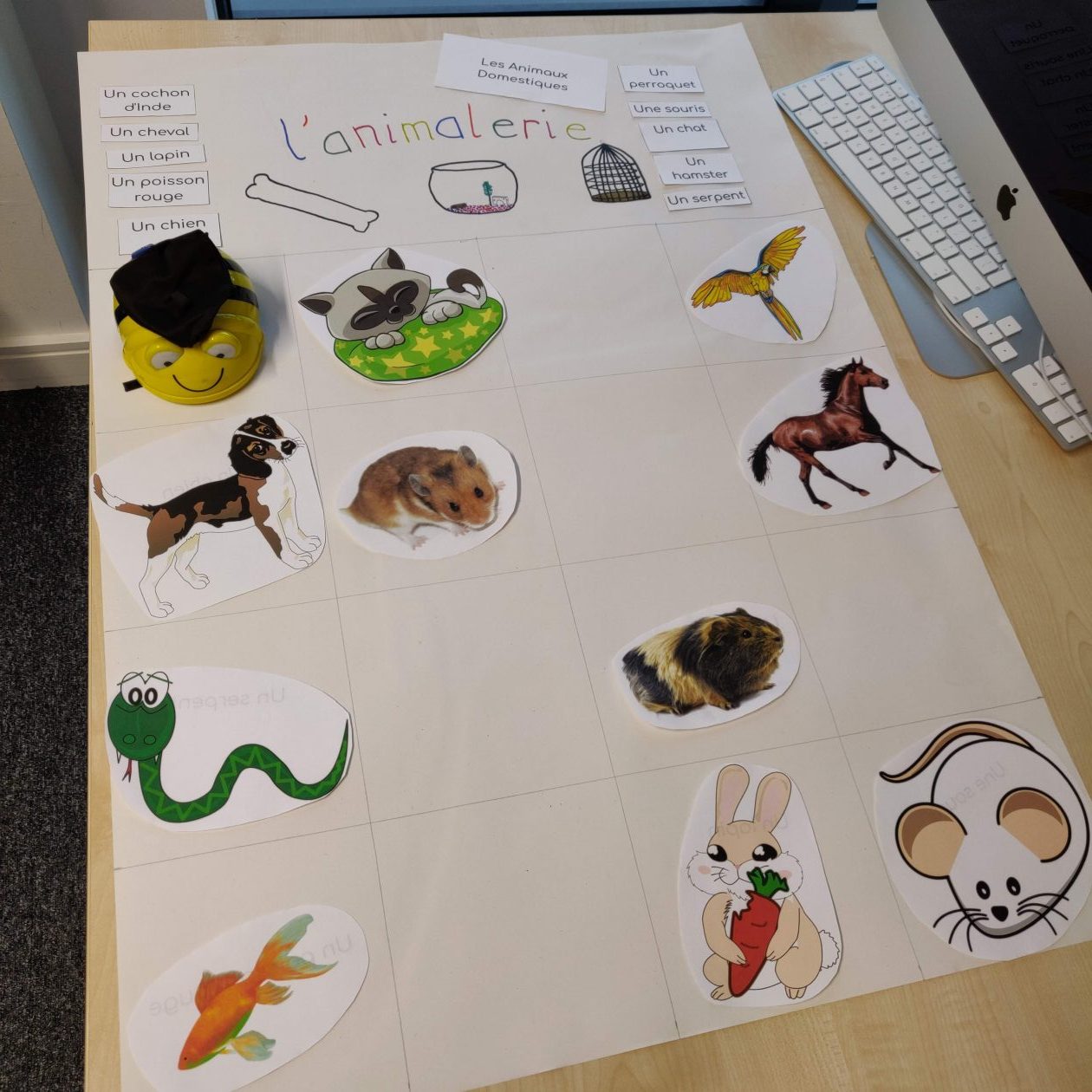The modern classroom should reflect the contemporary world and this can be achieved by teaching programming. More specifically, in the primary education context, we can use programmable toys to familiarise students with the key concept of being able to describe and demonstrate a journey (Janka, 2008). In this session, we were looking at the ideas programmable toys can facilitate to achieve cross-curricular learning. The idea of learning through programming dates back as early as the 1960s (Minsky and Papert, 1969). Papert created one of the first programs that was used by children to learn basic programming. This tool is called Logo and having taken the opportunity to try it, I can see (although rudimentary in comparison to today’s aesthetically pleasing programmable toys) this could be used to help children engage with technology to enhance their learning.
Today’s lesson focused mainly on the programmable toy Bee-Bot. Although I never had the opportunity to use anything like this when I was in primary school, I have used online programs that achieve a similar outcome.
The benefits of using such toys include:
- Interactive responsive learning
- Instant feedback received by the learner
- Problem-solving skills developed
- Creativity facilitated
- The learner is in control
- Hands-on learning
- Challenge and enjoyment
- Cross-curricular links (literacy, numeracy and other skills developed)
When thinking of the above, we were tasked to create a Bee-Bot map that develops not only a technologies learning outcome but one that also deliberately incorporate on another subject. We were briefed the week before, and I took that as an opportunity to think of different ideas as I did not want to focus on a numeracy or literacy outcome as I felt this would have been oversaturated. I took the time over the week to look at the Curriculum for Excellence (CfE) and decided to develop on an idea involving a modern foreign language. I decided to take this route as I thoroughly enjoy engaging with the one plus two languages policy (Education Scotland, 2012) as I see this as an integral role in promoting the four capacities of the curriculum: “Confident Individuals, Successful Learners, Responsible Citizens and Effective Contributors. This, in turn, will help learners engage with the wider society” (SCILT, 2012, n.p.).
My Bee-Bot map was made to help cement a learner’s knowledge in identifying animals in French – specifically animals that are typically pets and in turn fulfilled the following experiences and outcomes from Curriculum for Excellence:
- MLAN 1-08a – I can recognise labels and environment print. I am beginning to organise images and text. With support, I can sequence images and text to demonstrate my understanding.
- MLAN 1-08b – I can work on my own or with others to demonstrate my understanding of words and phrases containing familiar language.
- TCH 1-15a – I can demonstrate a range of basic problem solving skills by building simple programs to carry out a given task, using an appropriate language.
This was made by having a map that was four squares by four squares with a theme of a pet shop. One square is dedicated to being the shop’s entrance (where the Bee-Bot would start any journey) and there were picture card of animals placed in random spaces. A learner would pick a piece of paper that would have the name of an animal in French. The learner would then program the Bee-Bot to go the space the picture of the animal they picked. They would then put the Bee-Bot at the entrance and turn the picture over which would have the answer on the other side allowing them to check their responce. This refers back one of the main benefits of using programmable toys in learning – getting instant feedback.

I enjoyed making my Bee-Bot map and believe if I was to use it as part of a lesson it would create a positive learning experience. Additionally, I would hope that doing so would parallel Lydon’s classroom findings – that learners would be able to work independently faster than expected (Lydon, 2008). Obviously, these figures should be taken cautiously as it is a small sample size but, in an ever-increasingly digital world, it is clearly an imperative to familiarise children with basic programming.

References
Education Scotland. (2012) Language Learning In Scotland: A 1+2 Approach. [Online] https://www.gov.scot/publications/language-learning-scotland-12-approach/ [Accessed: 15 January 2019].
Janka, P. (2008) Using a Programmable Toy at Preschool Age: Why and How? [Online] http://www.terecop.eu/downloads/simbar2008/pekarova.pdf [Accessed: 15 January 2019].
Lydon, A. ( 2007) Let’s Go With Bee-Bot: Using your Bee-Bot across the curriculum. TTS Group Ltd.
Minsky, M and Papert, S. (1969) Perceptrons: An Introduction to Computational Geometry. MIT Press.
SCILT (2012) Modern Languages Excellence Report. [Online] https://www.gov.scot/binaries/content/documents/govscot/publications/publication/2012/05/language-learning-scotland-12-approach/documents/00393437-pdf/00393437-pdf/govscot%3Adocument [Accessed: 15 January 2019]

